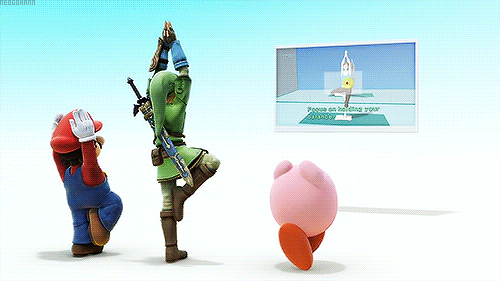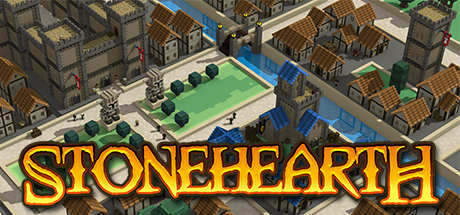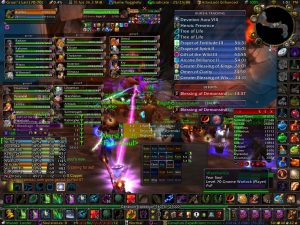Category Archives: Games Design & Art
My Indie Inspirations
A) Choose one of the indie designers / developers and outline why there work and approach is of interest to you.
Jason Rohrer’s work is very different and you can see the level of progression he has made through his work. From shooting geometrical shapes on a grid to hand-drawn life stories Rohrer’s work is always changing and has unique ideas that have never been done before. He uses wide ranges of inspiration to create ideas for his games which he sometimes posts on his personal website. Using simple programs like MS paint and gimp he has created story games, apps and multiplayer games
One of his games interests be in particular, called ‘Sleep is Death’. This was his seventh game produced. The concept is very unique. Kids play and make stories with their imagination. Recently sandbox games have become more popular (Garry’s mod for example) which allow people to make their own games within a game. I’m in love with this idea as the possibilities are endless and make memories. Of course, this is always way more fun with other people. Rohrer included these different elements to make a story based sandbox game where players get to decide what the story is, what visuals to include and how well they role play.
His newest game idea; One hour One Life, is also a very different idea that I will definitely be following and taking inspiration from.
‘Header’ For Sleep Is Death, by Jason Rohrer
B) What do you think could be the most exciting indie projects that are in development
The most exciting project to me is the development of a game called ‘Stonehearth’, founded by Tom and Tony Cannon. Originally, the demo was used to start a Kickstarter which originally asked for $150,000, however they ended up making $751,920 and gaining 22,844 backers. overwhelmed by their support, they make sure to post weekly development blogs to let players know of the updates they are working on.
Started in 2013 it is still being updated and pushing the boundaries now in 2017. controlling villagers became popular after the make of ‘virtual villagers’ in 2011. To this day, people still play this classic game as it comes out on different platforms. I think this was an inspiration to many games including Stonehearth.
The developers of stonehearth have however taken many different ideas to make their game modern and exciting. one of the most interesting concepts to me is that you can create your own buildings and control your military. The game is very in depth and lets you control the whole creation of your town/village. At the very start of it’s creation; the developers talked about wanting to incorporate a multiplayer aspect that has never been done before with this kind of game. On 21/11 the weekly blog was about testing their multiplayer idea, and included a video of some of the developers being able to play in the same world. however there was still a lot of problems for actual players regarding this, but i’m very excited whenever I see updates have been made.
sources:
https://discourse.stonehearth.net/t/stonehearth-steam-grid-icons/7611
http://hcsoftware.sourceforge.net/jason-rohrer/
https://en.wikipedia.org/wiki/Stonehearth
Artificial Intelligence
A) Behavioral modelling is an important part of NPC development for games. Should emotive modelling be part of that development?
Emotive modelling is an extremely important aspect of development in games for NPCs. As video games become more developed and realistic players gradually become more immersed in the experience of playing games. AI has developed as such a fast rate that it has now become commonplace to see smart AI that acts almost human like. Emotive modelling goes a long way in this process to helping players understand emotion in games thereby bringing them more enjoyment.
B) Consider your favorite video game. If it contains AI controlled agents how individualistic are they and their behaviors, and, how might you set about improving them?
Fallout New Vegas uses the gamebryo engine which enabled obsidian to use the engine to create radiant AI which responds to each other and the player in a predetermined behavioural manner. New Vegas is an RPG meaning that it is completely based upon player choices. AI react to the choices you make in the form of factions within this game. NPCS have a range of emotions towards the player and these affects how you can interact with certain people. New Vegas’ NPCS can be difficult at times for example the companions you can have on your quest can prove to be troublesome and annoying sometimes. For example, you could be walking down a tight corridor and they will constantly be blocking your path trying to interact with you. Stealth can be used in New Vegas and the AI can feel buggy at times when you are using the stealth mechanic. Sometimes it feels as though the AI can see through walls and other times they are blind to everything, improving these AI is down to the gamebryo engine itself. The engine is outdated compared to other titles, but it offers and immersive RPG experience.
Sources
Click to access c3628f011a59124946f4b3bef59237ea21f8.pdf
https://www.theguardian.com/technology/2016/oct/12/video-game-characters-emotional-ai-developers
http://www.sciencedirect.com/science/article/pii/S1875952111000486
http://mmi.tudelft.nl/~joostb/files/Popescu_Broekens_Someren_2013.pdf
http://www.digra.org/wp-content/uploads/digital-library/07311.25139.pdf
https://arxiv.org/ftp/arxiv/papers/0903/0903.0735.pdf
http://sitn.hms.harvard.edu/flash/2017/ai-video-games-toward-intelligent-game/
https://www.technologyreview.com/s/609482/ai-is-dreaming-up-new-kinds-of-video-games/
https://www.theverge.com/2017/8/14/16143392/dota-ai-openai-bot-win-elon-musk
https://www.networkworld.com/article/3160106/artificial-intelligence/how-video-game-ai-is-changing-the-world.html
References
Norman, D. (1988). The Design of Everyday Things.
Lebowitz, J. (2011). Interactive Storytelling for Video Games.
Matthew M, GDA, 500 words on RCS (Final Task)
The RCS task has been quite interesting. A good number of topics have been covered, and both the important parts and the fun ones shared a good amount of focus. The freedom to pick questions (Especially the “pick an A Question and a B Question”) allowed me to explore topics that I was interested in, rather than just researching a topic I had no care for.
The lectures themselves were quite entertaining. The mix of formal presenting and informal conversation allowed us to both learn about the topic and explore other’s ideas on the subject, which complemented the blog section of the module as it allowed us to start with some predetermined ideas and areas to look into. The assortment of staff giving these lectures kept them feeling new, and held our interest for the module itself across its time. Being provided with the names of scholars, artists, and pioneers of each subject through the lectures and informal conversations provided great research capabilities straight off, a good foundation when mixed with the ideas other members of the class provided.
The use of blogs as a submission form, specifically in a module that sometimes ask for opinions, is quite a good idea. The wordpress page allows us to view the works of our class mates, not only learning more about them (useful early on in the year) but also giving us yet more to work with when it comes forming our own opinions and locating research material. The access to blogs from other courses also gives us a chance to broaden our horizons and learn more about other artistic industries.
All in all, whilst it would of been useful to learn about Harvard Referencing earlier in the module, I have no qualms and can only praise the module.
Copyright
– What do you see as the positives and negatives around copyright?
The copyright law, as it stands today, doesn’t quite work as well as it should; while it is great in some ways, it falls flat in others.
“The primary purpose of copyright law is to protect the creators of new works from unauthorized duplication.” (Hamel, N/A)
In theory the copyright law does work this way, as soon as you create a unique, physical product, you own the rights to it and no one else can duplicate it in anyway without your permission. This takes out the hassle of trying to register your product with proof of it being your idea straight away and, if no one challenges you or tries to copy your work, you need not worry about anything else. This is an excellent way to incentivise creativity however, there are also some deterrents towards being creative. Since the copyright law can be so strict and unforgiving, there is almost no chance of being able to use another product as a base for inspiration without being flagged.
Money is an important aspect of copyrights. If someone else does happen to copy your work and you want to challenge them to a lawsuit, you are required to pay a fee to officially register your product; this can put off smaller businesses who then lose out on their ideas. It also costs a lot of time to be able to get access to use someone else’s work or to prove that work belongs to you – again favouring big companies with more time and money.
– Is it possible to make anything new?
“I do believe that it’s still possible to create unique things in the contemporary world, and the usage of the same symbols by different people doesn’t mean ‘stealing,’ but an attempt to use the universal language in one’s own way.” (Glynska, 2016)
This quote stood out to be because it defines how we work as humans; we want to be individual, but we conform because it is easier to relate. This way of life means that we set trends as groups that slowly adapt into other trends. This is very apparent in the art world with clearly defined eras of art throughout time. What I think this all means is that certain parts of the things we create must be familiar. Writing a book in an existing language isn’t considered unoriginal because the reader needs to be able to understand it; let’s say that ninety percent of the ideas behind the story will already exist but it’s what the author does with the remaining ten percent that makes it a unique book. It’s the same with video games, developers must make games that contain enough familiarities from other games so that players know what is going on, but also include enough original ideas to make the game different.
Take the zombie apocalypse genre for example. This genre has been played out a lot over the last few years due to its initial popularity but still some titles stand out (such as The Last of Us) because they’ve taken this idea and added their own twist.
References
Glynska, M., 2016. Huffington Post. [Online]
Available at: https://www.huffingtonpost.com/marianna-glynska/is-it-possible-to-stay-un_b_13501556.html
[Accessed 3 December 2017].
Hamel, G., N/A. Chron. [Online]
Available at: http://smallbusiness.chron.com/pros-cons-copyright-laws-52554.html
[Accessed 3 December 2017].
Own
> How would you describe copyright law today and why we (might) need it?
Although the idea of copyright law is to legally protect someone’s material work, different country’s legal system might work in slightly different ways to protect, yet there is a union for nations to join that allows the author’s nations laws to come into effect first. (World Intellectual Property Organization, 1979) So, to describe copyright in once case might be describing it incorrectly for a particular nation’s laws and rights.
In general, copyright was created for protecting original works, which could be in the form of music or film media, art or literary works in the broadest sense or anything created digitally (Gov.uk, 2017). The way which copyright law works is to protect others from using material work without permission. It is important to note that only ‘material’ work is protected and not ideas, unless they are written down, making them material.
The reason for professionals to want copyright laws would be to prevent other persons from using that created work for their own benefits without the author’s permission. A good and clear example of this would be the act of piracy of media such as DVD’s or music. (Laws.com, 2017) Copying for free the creations of these without paying is a copyright infringement and violates the rights of the owner/author of that media. This also applies to non-professionals that may create something as explained above, though due to the costs of legal representations, it can be difficult for some to protect their copyright. (Vandergriff, 2011)
> Outline an example where you think influence became infringement?
King Kong Vs Donkey Kong
The classic King Kong of 1933 was a film created by RKO General (IMDb, 2017), a company which later, legally forced Universal to defend their rendition of King Kong in 1976. (OpenJurist, 1986) Not long after this, in 1982, Universal filed copyright infringement against the creators of Donkey Kong, claiming that
“Nintendo infringed Universal’s trademark in King Kong when it marketed its popular video game Donkey Kong.” (OpenJurist, 1986)
I feel this case is an interesting example of where influence came close to becoming infringement. The sole reason to why both law suits were awarded to the defendants was due to the Intellectual Property(IP) of King Kong belonging to public domain. This put simply, is a type of work that cannot be copyrighted, therefore not owned by an individual or company. Anything within the public domain belongs to the public, free to use without permission. (Stanford University Libraries, 2017) Universal used this knowledge to win the case against RKO General to be able to use King Kong IP. It was this same reasoning that Nintendo was ruled for, in defence against Universal.
Although the question is where influence became infringement, I feel it is important to notice that without the public domain, Universal would not have been successful in their first lawsuit. Without public domain, Universal would have breached the copyright infringements by using King Kong IP. Therefore, would not have been in position to claim ownership against Nintendo. Both Nintendo and Universal were influenced by the original of 1933, co-authored by the author of the book upon which the film was based on. Which would mean the original film had the copyrights to the IP.
Bibliography
Gov.uk, 2017. How copyright protects your work. [Online]
Available at: https://www.gov.uk/copyright
[Accessed 02 12 2017].
IMDb, 2017. King Kong. [Online]
Available at: http://www.imdb.com/title/tt0024216/
[Accessed 03 12 2017].
Laws.com, 2017. 10 COPYRIGHT LAWS YOU HAVE TO KNOW. [Online]
Available at: https://copyright.laws.com/copyright-law
[Accessed 02 12 2017].
OBIAS, R., 2014. 11 Times Video Games Led to Lawsuits. [Online]
Available at: http://mentalfloss.com/article/55078/11-times-video-games-led-lawsuits
[Accessed 03 12 2017].
OpenJurist, 1986. 797 F. 2d 70 – Universal City Studios Inc v. Nintendo Co Ltd. [Online]
Available at: https://openjurist.org/797/f2d/70/universal-city-studios-inc-v-nintendo-co-ltd
[Accessed 03 12 2017].
Stanford University Libraries, 2017. Welcome to the Public Domain. [Online]
Available at: https://fairuse.stanford.edu/overview/public-domain/welcome/
[Accessed 03 12 2017].
Vandergriff, J., 2011. The True Cost of Copyright Infringement. [Online]
Available at: https://webdam.com/blog/true-costs-of-copyright-infringement/
[Accessed 03 12 2017].
World Intellectual Property Organization, 1979. Berne Convention for the Protection of Literary and Artistic Works. [Online]
Available at: http://www.wipo.int/wipolex/en/treaties/text.jsp?file_id=283693
[Accessed 03 12 2017].
References
http://smallbusiness.findlaw.com/intellectual-property/what-is-copyright.html/
https://copyright.laws.com/copyright-law
http://www.differencebetween.com/difference-between-copyright-and-vs-intellectual-property/
http://www.wipo.int/wipolex/en/treaties/text.jsp?file_id=283693
https://www.britannica.com/topic/Berne-Convention
http://www.clickandcopyright.com/blog/is-this-copyright-infringement-3-examples-and-explanations/
https://99designs.co.uk/blog/tips-en-gb/5-famous-copyright-infringement-cases/
http://mentalfloss.com/article/55078/11-times-video-games-led-lawsuits
https://www.nytimes.com/2017/03/07/movies/kong-skull-island-and-other-kong-movies.html
http://www.imdb.com/title/tt0024216/
https://openjurist.org/797/f2d/70/universal-city-studios-inc-v-nintendo-co-ltd
https://fairuse.stanford.edu/overview/public-domain/welcome/
http://www.nintendoworldreport.com/feature/23122/nintendo-history-101-donkey-kong-vs-king-kong
Week 9 – Ownership
A) What do you see as the Positives and negatives around copyright?
When something is protected by copyright, it means that the creator of said physical thing has the legal rights to control how it is used. This doesn’t stand for intellectual property however, only physically created things such as a song, book, or innovation, to name a few. Such a system has pros and cons to it however;
For instance, the main pro to copyright laws is that , “companies aren’t required to place a copyright notice on the work ti secure their rights” (Wilhelm Schnotz, N/A). By this, the copyright law has automatic protection independent of if a copyright notice is present. Any physical creation once published has automatic protection to prevent infringement. However, although it prevents infringement, without a copyright notice a company can not seek reparations nor punishments if their work is plagiarised. None the less, “Once creation is completed, they [businesses] have exclusive rights in controlling the use and exploitation of the works” (J.J Hua, 2014).
However, although basic rights are provided, to seek the ability to punish those who infringe upon work produced, companies must pay registering fees with the Copyright office, and document every piece of work, which can be time consuming and tedious. Additionally the cost to fully copyright an idea may be expensive for smaller organisations.
Furthermore, copyright laws can discourage creativity, because “people are not free to create derivative works from existing works”(Gregory Hamel, N/A). Which is difficult to imagine as nowadays it can be argued that everything surely must be inspired from somewhere, how original can someone be in today’s society?.
(258 Words)
B) Is it possible to make anything new?
“A man says to take the road less traveled by
And one day, people begin to listen.
So pretty soon, the road less traveled by grows familiar.
It suddenly loses its magic
And becomes just another dirt road.
Which goes to show, individuality eventually leads to conformity,
And then we’re all back at the beginning.
So tell me.
Are we really original?
Is everyone actually special?
Because I think it may just all be a lie.”
(Emily Diehl, 2014)
This Quote by Emily Diehl sums up, for me, the problem with originality within today’s society. Arguably it is impossible to truly be original as we are inspired by our surroundings, and may subconsciously be brought to an idea or innovation through the world around us. A musician for example, may believe that the piece they compose is completely original when in reality the tempo or rhythm may have been inspired by some external sources.
I however, believe that the idea of being able to make something completely new is true, the world is forever changing and innovations we use today where once never about. However, i do believe being completely original is very rare, whether we’re inspired by how other things interact with people and use such designs with our ideas, or we chose a specific colour or whatever, i believe that creating something completely new is almost impossible in today’s day and age.
(234 Words)
Reference List
Wilhelm Schnotz, (N/A). Pros & Cons of Copyright Laws | Your Business. [Online] Available at: https://yourbusiness.azcentral.com/pros-cons-copyright-laws-5170.html. [Accessed 01 December 2017].
J.J. Hua, (2014). Toward A More Balanced Approach: Rethinking and Readjusting Copyright Systems in the Digital Network Era, Springer-Verlag, Berlin Heidelberg (Pp. 39 – 41) [Accessed 01 December 2017]
Gregory Hamel, (N/A). Pros & Cons of Copyright Laws. [ONLINE] Available at: http://smallbusiness.chron.com/pros-cons-copyright-laws-52554.html. [Accessed 01 December 2017].
Emily Diehl, (2014). Originality: Does it Really Exist? | Think About It. [Online] Available at: http://sites.psu.edu/diehlthinkaboutit/2014/09/18/originality-does-it-really-exist/. [Accessed 01 December 2017].
Matthew M, GDA, Task 6, Question Pair 1
A) What do you see as the positives and negatives around copyright?
One of the biggest bonuses about Copyright is that it’s applied automatically. This is great for fledgling content creators as they don’t have to worry about paperwork or costs of protecting their work, they can just produce items and move onto the next. However, changes to copyright laws are proposed every now and then that can be counterproductive to these new creators (http://www.mi-pro.co.uk/news/read/music-creators-urged-to-sign-petition-for-fairer-copyright-legislation/022448, an example). What this shows us is that, clearly the current copyright laws are either dated for the modern world or just in need of change due to new realizations or events that have occurred recently.
Another negative of Copyright law is how it falls under Civil Law rather than Criminal Law. This incites people to make infringement claims as they will have the upper-hand from the get go (http://www.techtimes.com/articles/35298/20150225/apple-to-pay-532-9-million-in-patent-infringement-case-smartflash-leaves-court-smiling.htm, for example). This is a highly debatable point however, as if it were moved to Criminal Law the tables would turn and people would attempt to infringe on copyrights as they would be Innocent until proven Guilty in court.
However, the addition of Creative Commons is a great bonus for Copyright Laws. The ability to allow people to know what they can and can’t do with a product through the use of (up to) 3 little symbols. This means that people who create content from copyrighted products outside of the Fair Use and Parody Laws can still produce their content but are no longer required to communicate with the owner over what they can and can’t do.
B) Is it possible to make anything new?
Making something “New” is simply a matter of subjective opinion. Whether we realize it or not, everything in existence affects us in some way, from colors and shapes to more complex items like body language and context. When I’ve created applications in the past, the HCI elements of the application were decided based on how I knew it would affect the user, which I found out from my teachers, who found out from books and research and so on. However, that doesn’t mean that I follow the rules of HCI detailed in those books. Rather, my teachers may of mis-remembered something or ignored another from the book, and I in turn may of done the same when they were teaching me. The result is something similar to the rules outlined in the books, but not identical.
And it is this that I mean when I say that “New” is down to subjective opinion, in that how different an item must be to be considered “New” is decided by each person individually, hence why things like copyright can be difficult to defend and why avoiding infringement can be a nightmare. Everything is based on at least one other thing that came before, and we build upon it with our own ideas and quirks. However, is something new if it’s made from old parts?
“The ship wherein Theseus… had thirty oars, and was preserved by the Athenians… for they took away the old planks as they decayed, putting in new and stronger timber in their place, insomuch that this ship became a standing example among the philosophers, for the logical question as to things that grow; one side holding that the ship remained the same, and the other contending it was not the same.”
References
Musical Instrument Professional, published on 12/06/17, “Music creators urged to sign petition for fairer copyright legislation”, http://www.mi-pro.co.uk/news/read/music-creators-urged-to-sign-petition-for-fairer-copyright-legislation/022448, accessed on 30/11/17
Tech Times, published on 25/02/15, “Apple to pay $532.9 million in patent infringement case: smartflash leaves court smiling”,http://www.techtimes.com/articles/35298/20150225/apple-to-pay-532-9-million-in-patent-infringement-case-smartflash-leaves-court-smiling.htm, accessed on 30/11/17
Curve Finder, published on 13/10/16, “Originality doesn’t exist, only influence and iteration/, http://curvefinder.com/creativity/originality-doesnt-exist-influence-iteration/, accessed on 30/11/17
The Metapysicist, “The Ship of Theseus”, http://metaphysicist.com/puzzles/ship_theseus/, accessed on 30/11/17
Artificial Intelligence
A) Behavioural modelling is an important part of NPC development for games. Should emotive modelling be part of that development?
As video games are right now, I don’t think that emotive modelling needs to be a part of development but as technology progresses I think new types of genres will emerge that properly utilise these types of mechanics. (Stuart, 2016)
Open world RPG’s strive to create an immersive and believable world and for the most part they can achieve this, however NPC’s have never quite been believable enough. One of the restraints is memory; having one character that can remember player actions and react in meaningful ways isn’t too bad, but it becomes far too overwhelming when there’s a whole world full of these characters. Games, in the past, have found workarounds to try and mimic some sort of emotive behaviour.
For example, the Nemesis System in the Middle Earth series lets previously defeated enemies come back for revenge having remembered and adapted to how you defeated them before. This mechanic gives the illusion that each individual enemy that you kill has its own ‘AI’ but in fact there is just a general algorithm to generate these adaptions.
‘Think of the Nemesis System as your opponent’s turn in a board game. On your turn, you kill a bunch of the captains in an area’s orc army ranks. Your turn ends when you die (or when you choose to advance time at a fast travel location). On your “opponent’s” turn, new orcs are promoted into those vacated positions and others advance up the hierarchy. These promoted orcs become captains.’ (Parkin, 2017)
B) Consider your favourite video game. If it contains AI controlled agents how individualistic are they and their behaviours, and, how might you set about improving them?
The Elder Scrolls V: Skyrim has been one of the most influential open world RPG’s of recent times; it is well known for its immersive lore and engaging story lines but also its strange and often quite hilarious character interactions.
The world of Skyrim is home to an impress number of interesting characters with unique motivations, so it would be nearly impossible for Bethesda make sure each NPC behaves like the player would expect an actual human to behave all the time. Most emotions portrayed by the NPC’s are either scripted or are extremely polarising. One minute a guard could be congratulating for saving the village from a dragon, the next they could be trying to arrest you for killing a chicken. It all comes down to the lack of individual NPC memory; if a villager remembered you completing a long quest for them, they might not get as mad if you steal a cabbage from their market stand. (Anon., 2015) Not many interactions have lasting value in the game, it usually comes down to recent events.
References
Anon., 2015. Reddit. [Online]
Available at: https://www.reddit.com/r/skyrim/comments/3br2rl/what_are_your_best_stories_of_ai_incompetence/
[Accessed 29 November 2017].
Parkin, J., 2017. Polygon. [Online]
Available at: https://www.polygon.com/middle-earth-shadow-of-war-guide/2017/10/9/16439610/the-nemesis-system-and-you
[Accessed 29 November 2017].
Stuart, K., 2016. The Guardian. [Online]
Available at: https://www.theguardian.com/technology/2016/oct/12/video-game-characters-emotional-ai-developers
[Accessed 29 November 2017].
Week 5 – Human-Computer Interaction
A) Select one example to outline the key concepts of human-computer interaction. Reflect upon the role of the “human”, the “computer” and the “interaction”
Human-computer interaction (HCI) is an area of research and practice that emerged in the early 1980s (interaction-design.org Staff). HCI consists of three parts: the human, the computer and the interaction between the first two. The human is any user or group of users that need to use the computer. The computer is any piece of technology that one can think of. For instance, a tablet, a phone, a desktop, a printer, etc. The human-computer interaction attempts to make sure that both the user (the human) and the computer interact with each other in a successful way. Therefore, HCI is the study of how people interact with computers and to what extent computers are or are not developed for successful interaction with human beings (cs.bham.ac.uk Staff).
The goals of HCI are to produce usable and safe systems, as well as functional systems. A usable system is easy to learn, easy to remember how to use, effective to use, efficient to use, safe to use, enjoyable to use (cs.bham.ac.uk Staff). A very simple and conclusive example of good interaction between the human and the computer is, I believe, the earphones. I think that children and maybe even toddlers nowadays know that the earphones jack is meant to be in the phone’s round hole to be able to listen to music. Also, the only buttons that you eventually get are the pause/answer calls one or/and the volume ones. When one sees a pause icon on a button, they will obviously know what that button does. It is the same with the plus/minus icon buttons. It’s very simple to learn that because of the design. I believe that the characteristics that the earphones present make them a usable system and the human-computer interaction is effective.
Earphones
B) Discuss the relationship between games design and human-computer interaction.
I think that most of the games nowadays are quite simple to use because the game designer wants the gamer (the user) to have a great experience while playing the game. Therefore, the game designer chooses to make an accessible game interface for everybody. Sometimes, complicated games may be harder to play since the interface becomes busier and that is where the HCI fails. I believe that when designing a game, the game designers and developers must consider the HCI if they want the game to be enjoyable and more than that, they must consider who they are designing for. The game design is very important in terms of colours, style and theme. In the same manner, a game for children needs to be easier to play than a game for gamers who have been trying and playing games for years.
Consequently, I strongly believe that the human-computer interaction is one of the things game designers must take into consideration before starting to design a game. This way, the gamer (the human) will be able to enjoy the game (the computer) and to efficiently and effectively use it.
Farm and Fun Interface
World of Warcraft Interface
External Links:
https://www.interaction-design.org/literature/topics/human-computer-interaction
https://www.cs.drexel.edu/~introcs/Fa14/notes/04.3_HCI/BadDesign.html?CurrentSlide=7








